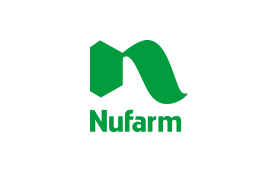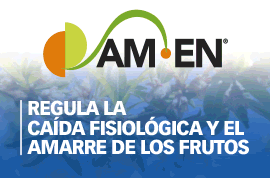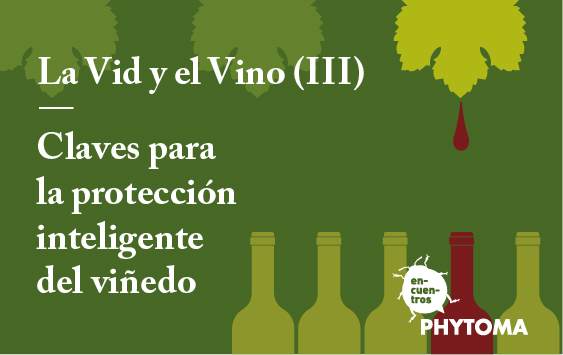The European Food Safety Authority (EFSA) is an independent European agency charged with the assessment and the communication on all risks associated with the food chain. EFSA?s PRAPeR (Pesticide Risk Assessment Peer Review) Unit more specifically deals with the risk assessment for pesticides and Maximum Residues Levels (MRLs) of pesticides in food. The PRAPeR Unit is in charge of peer reviewing the initial assessments performed by EU Member States on the active substances of pesticides. The conclusions of the peer review are submitted to the European Commission, in view of an EU decision on the acceptability of the active substances. In the field of MRLs, the PRAPeR Unit provides the Commission with reasoned scientific opinions presenting the assessment of the potential risks to consumer health arising from existing MRLs or new MRLs, and drafts the Annual Report on Pesticide Residues. A new Regulation on the placing on the market of plant protection products will introduce important changes, enhancing safety, harmonisation and predictability. The new Regulation will also impact upon EFSA?s PRAPeR Unit, as new tasks will be allocated to the Unit.
What is EFSA?
The European Food Safety Authority (EFSA) is an independent European agency funded by the European Union which operates separately from the European Commission, European Parliament and EU Member States.
EFSA is governed by an independent Management Board whose members are appointed to act in the public interest and do not represent any government, organisation or sector. The 15-member Board sets EFSA?s budget, approves the annual work programme and is responsible for ensuring that EFSA works effectively and co-operates successfully with partner organisations across the EU and beyond. EFSA?s Executive Director, currently Catherine Geslain-Lanéelle (appointed in July 2006 for a five year term), is the legal representative of the Authority. She is responsible for all operational matters, staffing issues and drawing up the annual work programme in consultation with the European Commission, European Parliament and EU Member States.
EFSA?s role is to assess and communicate on all risks associated with the food chain. Since EFSA?s advice serves to inform the policies and decisions of risk managers, a large part of EFSA?s work is undertaken in response to specific requests for scientific advice. Requests for scientific assessments are received from the European Commission, the European Parliament and EU Member States. EFSA also undertakes scientific work on its own initiative, so-called self-tasking. EFSA?s advice frequently supports the risk management and policymaking processes. These may involve the process of adopting or revising European legislation on food or feed safety, deciding whether to approve regulated substances such as pesticides and food additives, or, developing new regulatory frameworks and policies for instance in the field of nutrition. EFSA is not involved in these management processes, but its independent advice gives them a solid scientific foundation. Through its risk communications activities, EFSA seeks to raise awareness and further explain the implications of its scientific work. EFSA aims to provide appropriate, consistent, accurate and timely communications on food safety issues to all stakeholders and the public at large, based on the Authority?s risk assessments and scientific expertise.
The PRAPeR Unit Within EFSA, two Units deal with pesticides: the Pesticide Risk Assessment Peer Review (PRAPeR) Unit and the PPR (Plant protection products and their residues) Unit. This article is only dealing in detail with the activities of the PRAPeR Unit. This Unit has two major tasks: the peer review of active substances used in pesticides and activities related to Maximum Residue Levels (MRLs). The PRAPeR Unit?s risk assessments of pesticides not only deal with food safety, but also cover the impact on the environment (for instance groundwater) and non-target species, and the exposure of operators, workers and bystanders. The PRAPeR Unit consists of 35 staff members, including experts in toxicology, ecotoxicology, fate and behavior of pesticides in the environment, residues and MRL-setting, and the physical and chemical properties of pesticides. The peer review of active substances Since August 2002, the PRAPeR Unit has been responsible for the EU peer review of active substances used in pesticides. This task is carried out in line with procedures and deadlines set out in European legislation. Directive 91/414/ EEC concerning the placing of plant protection products on the market states that active substances in pesticides are only approved for use in the EU if they have undergone a peer reviewed safety assessment. The Directive requires the peer review by the end of 2009 of all active substances that were on the market in the EU by 1993. The substances covered by the review programme are often referred to as "existing substances" since they were on the market at the time the legislation entered into force (July 1993). So-called "new substances" that have been placed on the market since 1993 are also assessed following the same procedures. The evaluation of both existing and new active substances is done through a tiered approach. For each active substance, at least one pesticide manufacturer or marketing company has to submit a file of scientific information and studies in accordance with the requirements set out in EU legislation. A Member State is appointed rapporteur for the substance, with the job of carrying out an initial risk assessment based on the submitted file, according to agreed evaluation procedures. The Member State then prepares a Draft Assessment Report (DAR) which is then pass on to EFSA for peer review. DARs are made publicly available on the EFSA website for public consultation, so that the public can submit comments. Scientists from the PRAPeR Unit and the Member States peer review the DAR in order to take account of all points of view and to guarantee the highest standards. If necessary, discussions with expert scientists from the regulatory authorities of Member States also take place. EFSA then drafts conclusions summarising the outcome of the peer review process which are sent to the EU Commission and published on the EFSA website. In 2008, the PRAPeR Unit completed 62 conclusions on active substances. Taking into account EFSA?s conclusions, the EU Commission and Member States take decisions following legally defined procedures on whether or not to include an active substance in the EU?s positive list (Annex I of Directive 91/414/EEC). This determines whether an active substance can be used in a product in the EU. Member States also take decisions at national level on whether individual products with specific use recommendations remain on the market in their countries. In the review programme of existing pesticides which started back in 1992, some 1,000 active substances were evaluated. 26 % -corresponding to about 250 substances- passed the harmonised EU safety assessment. The majority of substances (67%) were eliminated because dossiers were either not submitted, were incomplete or withdrawn by industry. About 70 substances failed the review and have been removed from the market, because the evaluation carried out did not show safe use with respect to human health and/or the environment (Fig. 1). There is however a possibility to resubmit an application for inclusion in the positive list for substances which was not included in Annex I in the context of the review programme, in line with the provisions of Regulation (EC) n° 33/20081. Since the publication of this Regulation, some 83 applications have been resubmitted. The peer review of these applications will be a major task for the PRAPeR Unit in 2010. MRL activities Maximum Residue Levels (MRLs) are the upper legal levels of a concentration for pesticide residues in or on food or feed. MRLs are set for a wide range of food commodities of plant and animal origin, and they usually apply to the product as put on the market (e.g. oranges including the peel or stone fruit including the stones). MRLs are not simply set as toxicological threshold levels, but they are derived after comprehensive assessment of the properties of the active substance and the residue behaviour on treated crops. An indispensable precondition for setting MRLs is the performance of a risk assessment to ensure consumer safety. Since 1976, harmonised legal provisions for pesticide residues in food, the so-called Maximum Residue Levels (MRLs), have been established at EU level. However, only under Regulation (EC) No. 396/20052, a full harmonisation for all pesticide MRLs has been established (since 1 September 2008). The MRL team, part of the PRAPeR Unit, provides independent scientific advice to the European Commission MRLs. The team is responsible for: - the assessment of the potential risks to consumer health arising from existing MRLs or new MRLs applications; - the assessment of the potential risks to consumer health arising from active substances for which MRLs are not required; - the development and maintenance of databases on specific information related to MRLs; - the drawing up the Annual Report on Pesticide Residues. 1 Commission Regulation (EC) n° 33/2008 of 17 January 2008 laying down detailed rules for the application of Council Directive 91/414/EEC as regards a regular and an accelerated procedure for the assessment of active substances which were part of the programme of work referred to in Article 8(2) of that Directive but have not been included into its Annex I. 2 Regulation (EC) n° 396/2005 of the European Parliament and of the Council of 23 February on maximum residue levels of pesticides in or on food and feed of plant and animal origin and amending Council Directive 91/414/EEC The MRL team provides scientific advice in the form of reasoned opinions in cases of well established scientific or technical principles. If, during the detailed assessments for certain MRLs and/or active substances, questions that cannot be resolved by the MRL team arise, then the team may consult the Panel on Plant Protection products and their residues (PPR) of EFSA for a scientific opinion. In order to quantitatively assess the safety of the EU MRLs or proposals for MRLs, the chronic and acute dietary consumer exposure to pesticide residues is estimated by using a calculation model developed by EFSA. The model has been built up by using national food consumption figures and unit weights provided my Member States. Once the chronic and acute dietary consumer exposure is estimated, this is compared to the relevant toxicological reference values, i.e. the Acceptable Daily Intake (ADI) and the Acute Reference Dose (ARfD), respectively. Between 1 September 2008 and 1 September 2009, the MRL team has finalised xx reasoned opinions. This year, EFSA has published its first Annual Report on Pesticide Residues, which provides an overview of the pesticide residues in food observed throughout the European Union during 2007 and assesses the exposure of consumers through their diets. The report showed that the majority of the samples complied with the legal maximum residue levels (MRLs) of pesticides and made a series of recommendations to further improve the collection of data required for pesticide exposure assessment. The PPR (Plant protection products and their residues) Unit As mentioned above, a second Unit within EFSA deals with pesticides, the Plant protection products and their residues (PPR) Unit. This Unit supports the Panel on Plant protection products and their residues (PPR Panel), which is providing independent scientific advice on the risk assessment of plant protection products and their residues, looking at risks for the user/worker, the consumer and the environment. The Panel?s work is based on reviewing scientific information and data in order to produce scientific opinions and advice for risk assessors and risk managers. This helps to provide a sound foundation for European policies and legislation and supports risk managers in taking effective and timely decisions. The Panel works closely with the PRAPeR Unit. The PPR Panel is asked for its opinion on any issues that cannot be resolved within the PRAPeR peer review and MRL procedures or when further scientific guidance is needed, mostly in the fields of toxicology, ecotoxicology, fate and behaviour of pesticides and residues. A more recent additional activity is to update the existing European guidance documents in risk assessment of plant protection products and to develop ones in new scientific areas. The new Regulation concerning the placing of plant protection products on the market This autumn, the Directive 91/414/EEC is due to be replaced by a new EU legislation, the Regulation concerning the placing of plant protection products on the market. Compared to the Directive 91/414/EEC, the new Regulation intends to: - promote the use of safer products (up-to-date data requirements, introduction of substitution principle and comparative assessment, simplified procedures for basic substances and low risk substances, introduction of criteria for active substance approval, cumulative and synergistic effects to be taken into account in the assessments); - enlarge the scope of the legislation (safeners, synergists, co-formulants, adjuvants are now covered by the legislation); - enhance predictability for the applicants by laying down clear procedures and time lines (active substance approval, parallel imports, data protection); - enhance harmonisation of the availability of pesticides throughout the EU (introduction of zonal authorisations). However, the basic rules of the Directive 91/414/EEC are kept in place: harmonisation of the data requirements throughout the EU, harmonized evaluation methodology and authorisation criteria, active substance decision making at EU level, plant protection product authorisation at Member State level, mutual recognition of national authorisation. The new Regulation will also have an impact on the PRAPeR Unit?s activities. The procedures are laid down in much more detail than under Directive 91/414/ EEC, indicating more strict and challenging time lines for EFSA. For instance, EFSA will have to deliver a conclusion on an active substance within 120 days, to be extended to 150 days where it is appropriate to arrange for an expert consultation. Also, new tasks will be allocated to EFSA, among these: - assessment of the efficacy of pesticides, as the demonstration of efficacy will become a criterion for the approval of an active substance; in its conclusion, EFSA has indeed to assess the compliance with all approval criteria; - involvement in the assessment of safeners and synergists; these substances have been added in the scope of the regulation and will be treated in a similar way to pesticides? active substances; a review programme for the evaluation of these substances will be launched; - where requested by the Commission, delivery of opinions on possible restrictive or prohibition measures for approved active substances and with regard to treated seeds; the new Regulation will contain legal provisions that are specifically applicable to treated seeds; this is not the case under Directive 91/414/EEC; - where requested by the Commission, delivery of opinions on 120-day authorisations for pesticides not complying with the authorisation criteria and granted by Member States in emergency situations in plant protection.














